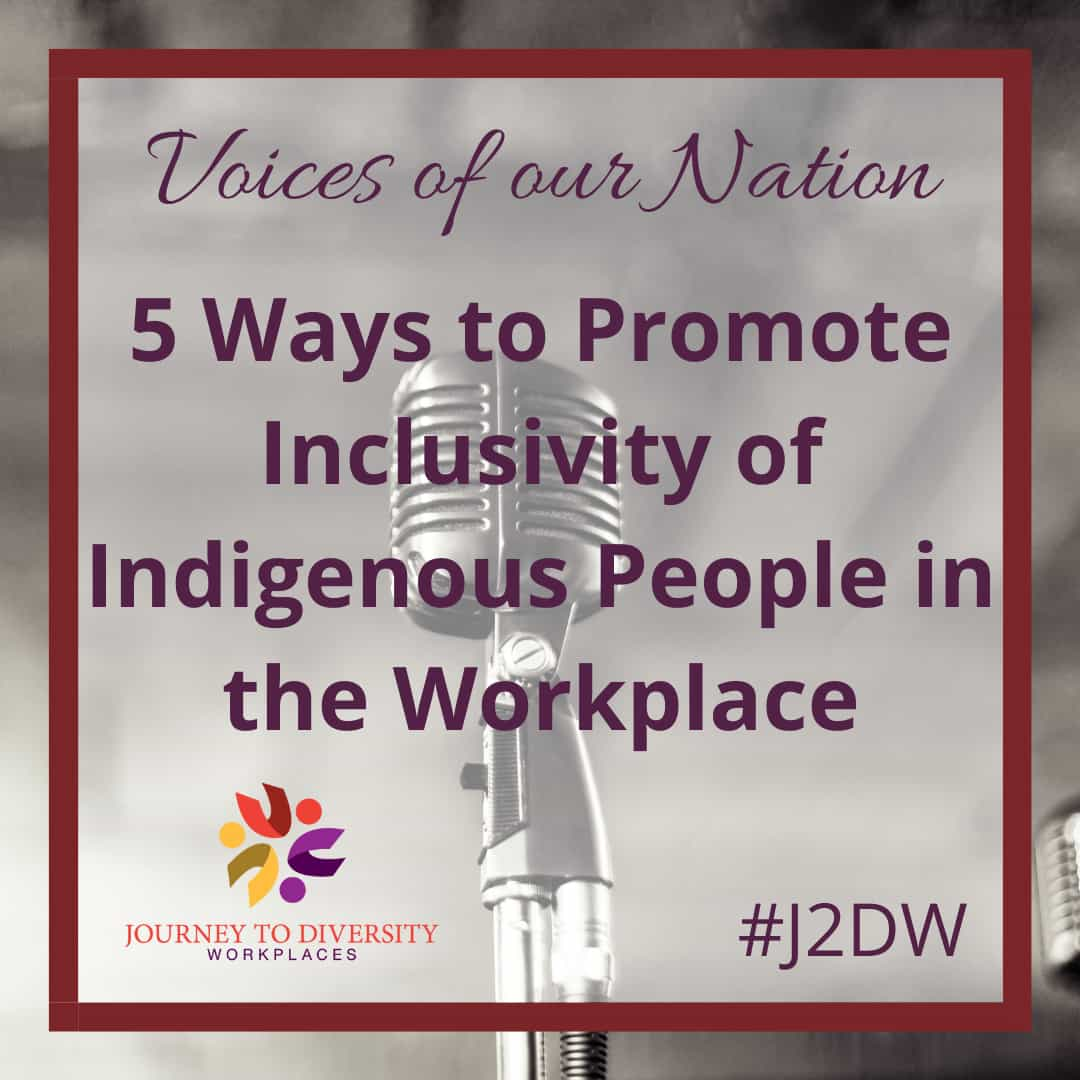Now you’ve read about the barriers that Indigenous people face simply to find employment. So, what’s next? Getting a foot in the door is undoubtedly difficult, but for many Indigenous workers, staying at a workplace for a prolonged period of time is also often a challenge. A lot of it can be addressed by the following: the lack of a sense of community in the workplace, diversity without true equity and inclusion, a lack of structural policies to accommodate diverse employees, and an absence of acknowledgement or action to help uplift Indigenous communities.
Corporations and employers must ask themselves: how can companies and fellow co-workers help create an environment that is sustainable and accommodating for Indigenous employees? Here are five ways that companies can create an inclusive workplace environment.
- Get educated on different Indigenous cultures, traditions, important dates, customs, and communities. The First Nations, Métis, and Inuit communities of Canada all have their own unique identities, cultures, and customs, so it’s vital to be aware of them. Having this knowledge would allow employees to feel comfortable enough to come to you, the employer, with culturally sensitive topics that may affect their work. This understanding promotes a healthier employee-to-employer relationship because the employee knows that they are respected enough to not be pressured to suppress an important part of their identity in order to stay employed.
- Research ways other companies have uplifted and accommodated Indigenous people in the workplace. Run through your network, call your connections, and inquire about their policies, calls to action, and work environment. You, as the employer, are not required to have all the answers, but others who have been in your position may have some! It is also recommended that you reach out to Indigenous people in higher positions and gain their insight.
- Speak to your Indigenous employees! There is no better way to learn how to make an environment more inclusive for an individual than to gain their personal input. However, asking them in a one-to-one confrontation can be an uncomfortable situation for an employee to tell their boss of their complaints. Instead, having an anonymous forum or a monthly survey about EDI and the work environment where concerns can be voiced would be a better solution. A one-to-one meeting can still be on the table if that is desired by the employee.
- Establish policies that protect Indigenous people’s rights in the workplace, along with programs that give Indigenous employees access to certain resources and skill-development programs to be on an equal playing field with their colleagues (Guide to developing Indigenous Inclusion Policies, 2018). Policies enforce accountability. Having such policies and programs catering to Indigenous safety, work flexibility, childcare, workplace diversity, and EDI, is necessary.
- Donate to Indigenous charities and support Indigenous businesses. Getting educated, spreading awareness, or doing land acknowledgements are good places to start, but taking action is what truly makes a difference. The best way to practice what you preach is by donating to various Indigenous charities which help make education, housing, clean water, mental health resources, healthcare, and employment-seeking opportunities more accessible. Below, I will list a few Indigenous charities that you can donate to after reading this post.
If, as an employer, you have checked off every single mentioned recommendation, does this mean “I’ve completed my share of activism for the day?” No. That, in itself, is a privileged thought. Diversity and inclusion of Indigenous people in the workplace is an ongoing process in which you learn and grow with every step.
Indigenous Charities
Circles for Reconciliation
https://circlesforreconciliation.ca/
Sew on Fire Ministries
https://sewonfire.com/
Indspire
https://indspire.ca/
Canadian Roots Exchange
https://canadianroots.ca/
Sources
Guide to developing Indigenous Inclusion Policies. North Superior Workforce Planning Board. (2018, September). https://www.nswpb.ca/wp-content/uploads/2020/10/IW_-_The_Inclusion_Policy_Development_Guideonline.pdf
This article was written by summer student Ilesha Prabhudesai and edited by summer student Cossette Penner-Olivera. This article was funded by the Government of Canada.

